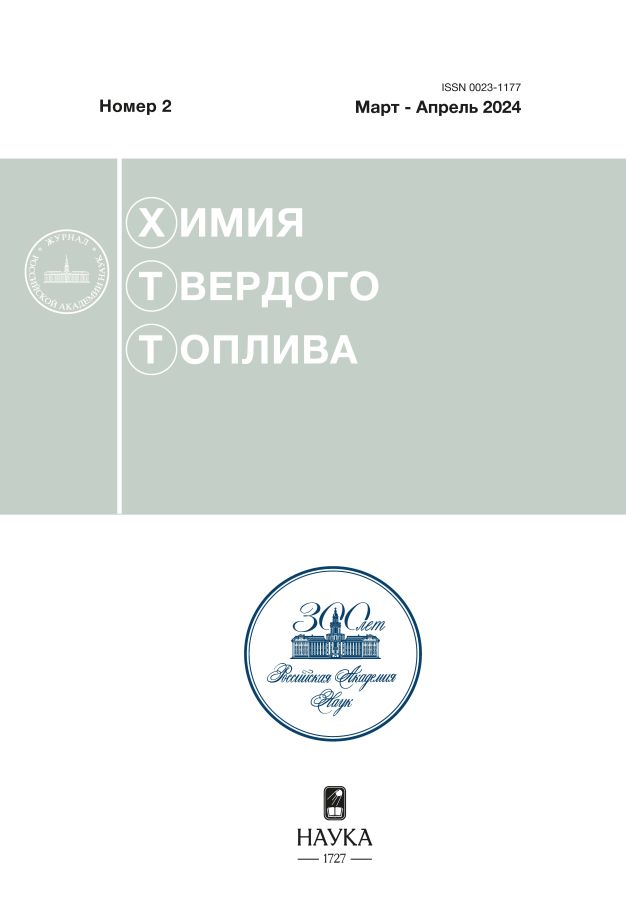Post-Pyrogenic Changes in the Microflora and Chemical Composition of Peat Waters of the Drained Area of the Bakchar Bog (Tomsk Region)
- Autores: Ovsyannikova V.S.1, Kharanzhevskaya Y.A.2,3, Sinyutkina A.A.2
-
Afiliações:
- Institute of Petroleum Chemistry, Siberian Branch of the Russian Academy of Sciences
- Siberian Research Institute of Agriculture and Peat of the Russian Academy of Agricultural Sciences
- National Research Tomsk State University
- Edição: Nº 2 (2024)
- Páginas: 68-74
- Seção: Articles
- URL: https://bulletin.ssaa.ru/0023-1177/article/view/661611
- DOI: https://doi.org/10.31857/S0023117724020117
- EDN: https://elibrary.ru/OLNTNH
- ID: 661611
Citar
Texto integral
Resumo
A comparative analysis of changes in the microbiological and chemical composition of water and peat in the drained reference and post-pyrogenic areas of the Bakchar bog was performed during the growing season of 2022. It has been revealed that peat-bog fire effect persists in the upper layer (up to 50 cm) of the post-pyrogenic area even 6 years after the fire. It manifests itself in a disruption of the seasonal dynamics of the content of a number of components (O2, CO2, NH+4, NO–3), and in the variance of count of microflora of different physiological groups, such as ammonifying, pedotrophic, oligotrophic, hydrocarbon-oxidizing, cellulose-destructing, denitrifying, and sulfate-reducing groups. In addition, the correlations between the analyzed microbiological and physicochemical parameters differ for the reference and post-pyrogenic areas, which suggests the long-term pyrogenic effect on the processes of accumulation and destruction of organic matter.
Texto integral
Sobre autores
V. Ovsyannikova
Institute of Petroleum Chemistry, Siberian Branch of the Russian Academy of Sciences
Autor responsável pela correspondência
Email: varja@ipc.tsc.ru
Rússia, Tomsk
Yu. Kharanzhevskaya
Siberian Research Institute of Agriculture and Peat of the Russian Academy of Agricultural Sciences; National Research Tomsk State University
Email: kharan@yandex.ru
Rússia, Tomsk; Tomsk
A. Sinyutkina
Siberian Research Institute of Agriculture and Peat of the Russian Academy of Agricultural Sciences
Email: varja@ipc.tsc.ru
Rússia, Tomsk
Bibliografia
- Данилова О.В., Белова С.Э., Куличевская И.С., Дедыш С.Н. // Микробиология. 2015. Т. 84. № 5. С. 546552. https://doi.org/10.7868/S0026365615050043
- Маслов М.Н., Маслова О.А., Копеина Е.И // Почвоведение. 2020. № 3. С. 330–339. https://doi.org/10.31857/S0032180X20030041
- Соловьев C. В. Экологические последствия лесных и торфяных пожаров: Автореф. дис. канд. техн. наук. М., 2006. 28 с.
- Гашкова Л.П. Геосферные исследования. // 2022. № 1. С. 118–125. https://doi.org/10.17223/25421379/22/9
- Малащук А.А., Филиппов Д.А. Трансформация экосистем. 2021. № 4 (1). С. 104–121. https://doi.org/10.23859/estr-200512
- Романенко В.И., Кузнецов С.И. Экология микроорганизмов пресных вод: лабораторное руководство. М.: Наука, 1974 г. 194 с.
- Терещенко Н.Н., Акимова Е.Е., Минаева О.М. Современные методы оценки микробиологических свойств и экологического статуса почвы: практикум. Томск: Изд. дом ТГУ, 2017. 152 с.
- Звягинцев Д.Г. Методы почвенной микробиологии и биохимии. М.: Изд-во МГУ, 1991. 304 с.
- Бабьева И.П., Зенова Г.М. Биология почв. М.: Изд-во МГУ, 1983. 248 с.
Arquivos suplementares
















